#bovids
Text

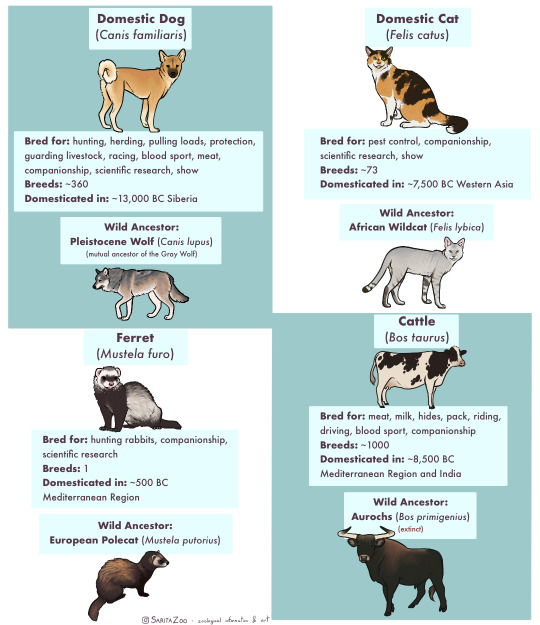


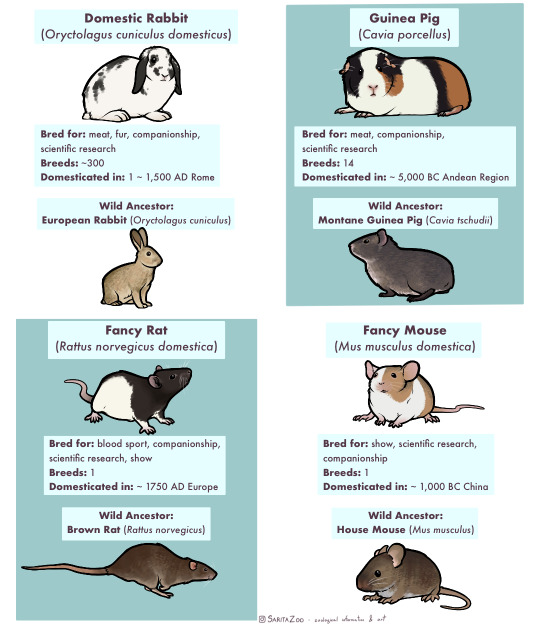
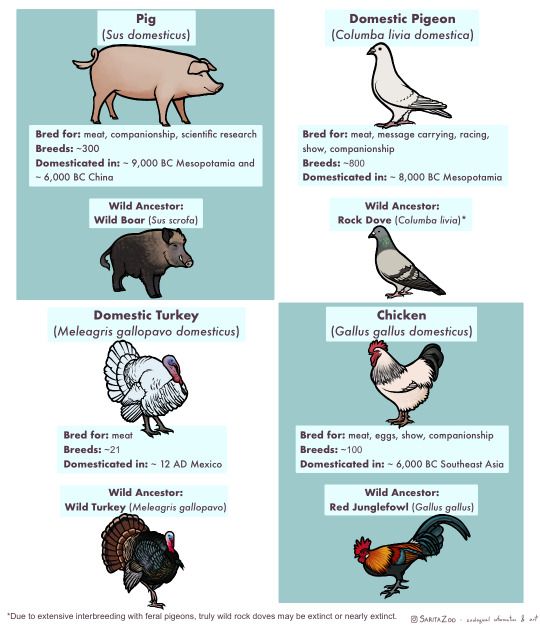
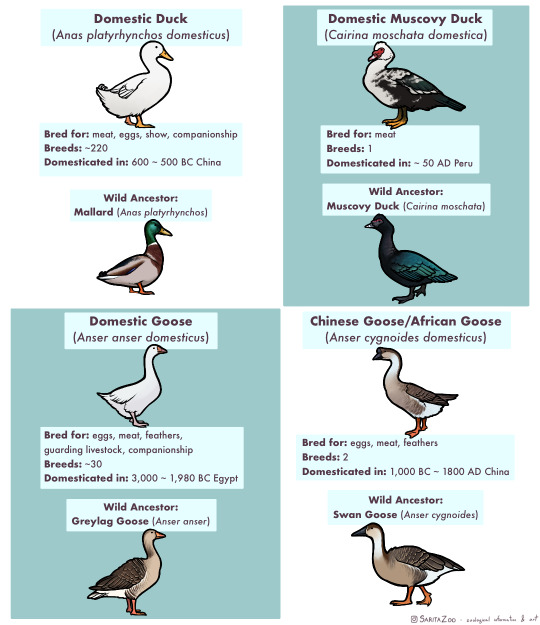
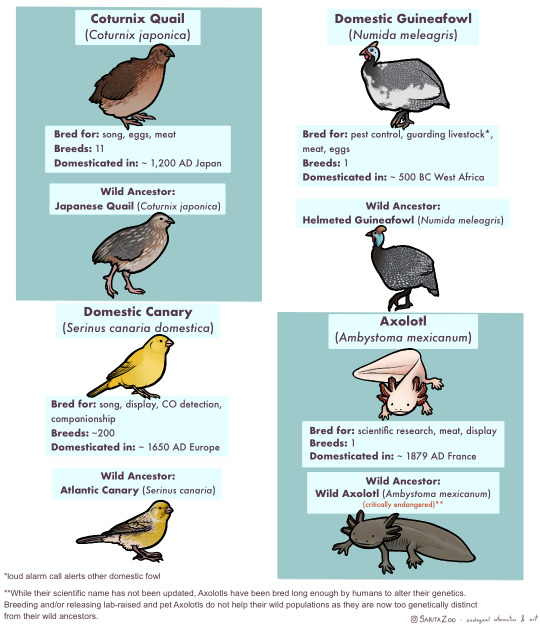


Phew. This one took, uh… a bit longer than expected due to other projects both irl and art-wise, but it’s finally here. The long-awaited domestic animal infographic! Unfortunately, I didn’t have enough space to cover every single domestic animal (I’m so sorry, reindeer and koi, my beloveds) but I tried to include as many of the “major ones” as possible.
I made this chart in response to a lot of the misunderstandings I hear concerning domestic animals, so I hope it’s helpful!
Further information I didn’t have any room to add or expand on:
🐈 “Breed” and “species” are not synonyms! Breeds are specific to domesticated animals. A Bengal Tiger is a species of tiger. A Siamese is a breed of domestic cat.
🐀 Different colors are also not what makes a breed. A breed is determined by having genetics that are unique to that breed. So a “bluenose pitbull” is not a different breed from a “rednose pitbull”, but an American Pitbull Terrier is a different breed from an American Bully! Animals that have been domesticated for longer tend to have more seperate breeds as these differing genetics have had time to develop.
🐕 It takes hundreds of generations for an animal to become domesticated. While the “domesticated fox experiment” had interesting results, there were not enough generations involved for the foxes to become truly domesticated and their differences from wild foxes were more due to epigenetics (heritable traits that do not change the DNA sequence but rather activate or deactivate parts of it; owed to the specific circumstances of its parents’ behavior and environment.)
🐎 Wild animals that are raised in human care are not domesticated, but they can be considered “tamed.” This means that they still have all their wild instincts, but are less inclined to attack or be frightened of humans. A wild animal that lives in the wild but near human settlements and is less afraid of humans is considered “habituated.” Tamed and habituated animals are not any less dangerous than wild animals, and should still be treated with the same respect. Foxes, otters, raccoons, servals, caracals, bush babies, opossums, owls, monkeys, alligators, and other wild animals can be tamed or habituated, but they have not undergone hundreds of generations of domestication, so they are not domesticated animals.
🐄 Also, as seen above, these animals have all been domesticated for a reason, be it food, transport, pest control, or otherwise, at a time when less practical options existed. There is no benefit to domesticating other species in the modern day, so if you’ve got a hankering for keeping a wild animal as a pet, instead try to find the domestic equivalent of that wild animal! There are several dog breeds that look and behave like wolves or foxes, pigeons and chickens can make great pet birds and have hundreds of colorful fancy breeds, rats can be just as intelligent and social as a small monkey (and less expensive and dangerous to boot,) and ferrets are pretty darn close to minks and otters! There’s no need to keep a wolf in a house when our ancestors have already spent 20,000+ years to make them house-compatible.
🐖 This was stated in the infographic, but I feel like I must again reiterate that domestic animals do not belong in the wild, and often become invasive when feral. Their genetics have been specifically altered in such a way that they depend on humans for optimal health. We are their habitat. This is why you only really see feral pigeons in cities, and feral cats around settlements. They are specifically adapted to live with humans, so they stay even when unwanted. However, this does not mean they should live in a way that doesn’t put their health and comfort as a top priority! If we are their world, it is our duty to make it as good as possible. Please research any pet you get before bringing them home!
#SaritaZoo#my art#domestic animals#domestication#pets#dogs#cats#ferrets#cows#sheep#goats#bovids#horses#donkeys#camels#llamas#alpacas#rabbits#guinea pigs#rats#pet rats#pet mice#pigs#pigeons#turkeys#chickens#ducks#geese#quail#i ran out of tags rip
31K notes
·
View notes
Text

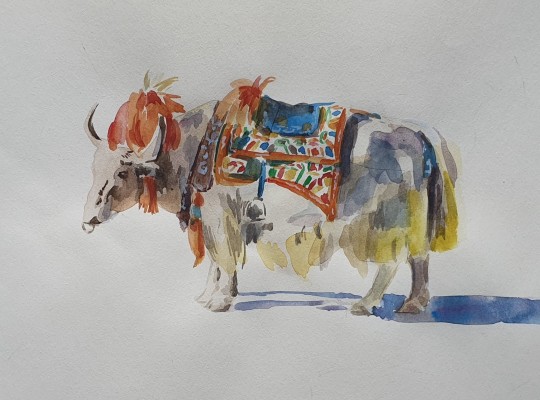


I've been self medicating my sadness by painting yaks.
#art#artist#artists on tumblr#animal art#yaks#yak#gouache art#gouache study#watercolour#watercolour painting#bovids
4K notes
·
View notes
Text
Thinking about bovid phylogeny and how this guy (four horned antelope)
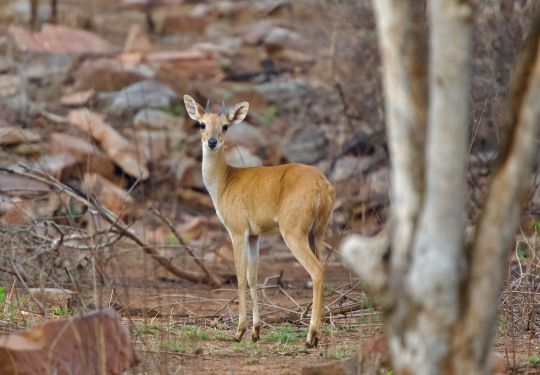
is more closely related to this guy (gaur)
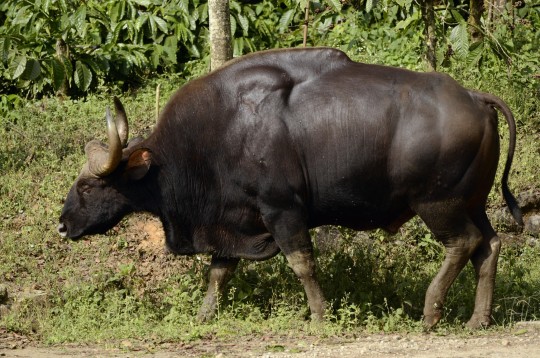
than he is to this guy (Damara dik-dik)

790 notes
·
View notes
Text
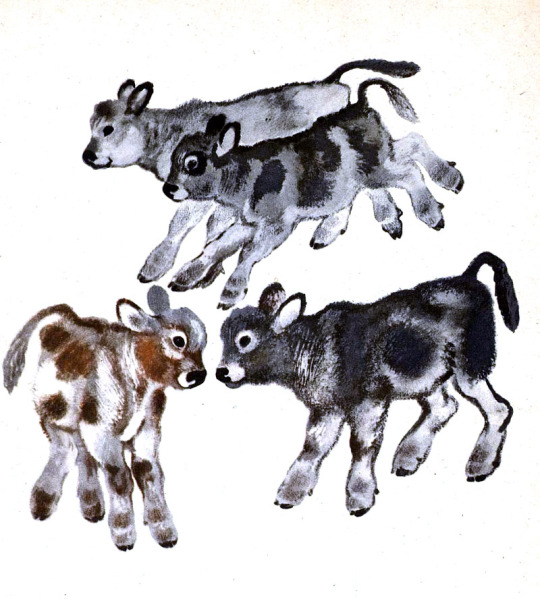
Евгений Чарушин "Вот они какие". 1962.
11K notes
·
View notes
Text
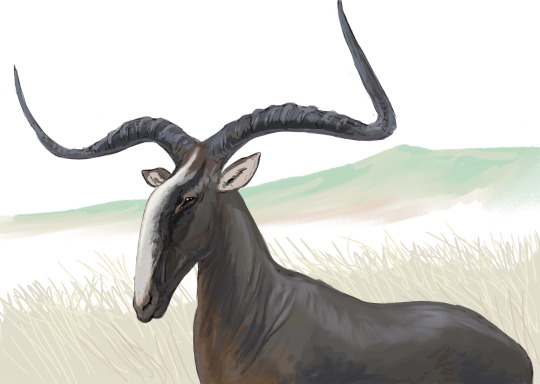
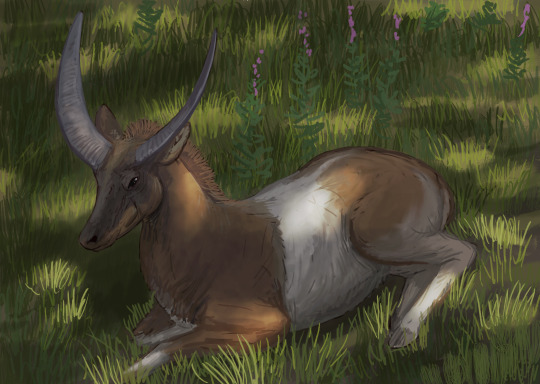

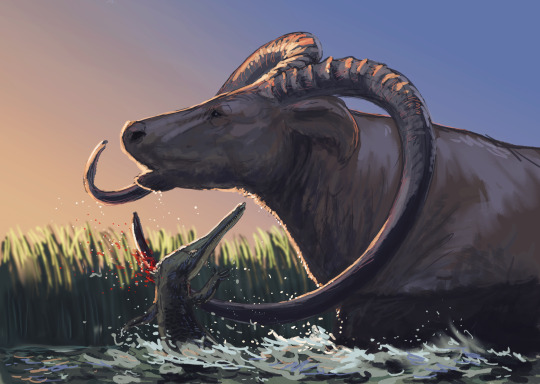
Results from the bovine #paleostream! Megalotragus, Tragoportax, Urmiatherium and Pelorovis oldowayensis.
511 notes
·
View notes
Text

Highland cow! Fuzzy friends. Their thick double-layered coat of hair - the longest of any cattle breed - acts as insulation against the cold and rainy climate of their Scottish highlands.
[ID: an illustration of a reddish, wooly cow with long horns, facing forward and to the left with its head bowed. It is holding a bouquet of small white flowers with pink centers in its mouth, and more of these flowers surround it on a jade green background. End.]
612 notes
·
View notes
Text
Uncharismatic Fact of the Day
How do you handle the heat? The desert dwelling antelope known as the oryx, or gemsbok, doesn’t mind high temperatures. In fact, during the hottest part of the day, an oryx will increase its body temperature up to 47 degrees Celsius (116 degrees Farenhiet). This causes their body to shed the excess heat to the surrounding air, and is an effective way of cooling the oryx without losing water.

(Image: Agroup of Arabian oryx (Oryx leucoryx) by David Mallon)
If you like what I do, consider leaving a tip or buying me a kofi!
#arabian oryx#Artiodactyla#bovidae#oryxes#antelope#grazing antelope#bovids#even-toed ungulates#ungulates#mammals#uncharismatic facts
560 notes
·
View notes
Text
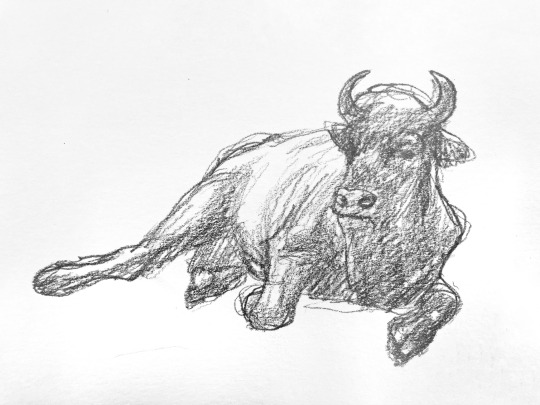
Wisent at rest
pencil sketch, 2021
#own work#artists on tumblr#Bison bonasus#wisent#European bison#bison#Bovidae#bovids#mammal#animals#animal art#nature#art#pencil#pencil study#pencil sketch
280 notes
·
View notes
Photo

Muskox (Ovibos moschatus)
Family: Cattle Family (Bovidae)
IUCN Conservation Status: Least Concern
Although its name and appearance may suggest that it is a species of wild bovine, the Muskox (plural Muskoxen) is more closely related to sheep and goats (although, as a member of the family Bovidae, it is still a cousin of cattle.) Found in arctic tundra biomes, Muskoxen live in mixed-sex herds with separate hierarchies for females and males, and a different system of organisation depending on the time of year: during the summer the highest-ranking males lead the herd in searching for food, but after mating the herd is largely led by the highest-ranking females. Muskoxen feed on lichens, grasses, mosses and woody plants (with the Arctic Willow, a tiny low-growing species of willow adapted to life in extremely cold climates, being particularly important in the diets of most individuals) and travel continually in search of food, with males periodically leaving strong-smelling scent markings on their tracks to encourage wandering females to join their herd. The size, strength and social behaviour of this species means that a healthy adult Muskox has few predators with the exception of the Arctic Wolf (which may take down even large males through cooperative hunting strategies), and on occasion the Brown Bear (although this is unusual), and when threatened every member of a herd will gather in a circle with their horns facing outwards towards the potential predator and any calves on the inside where it is safest. The vast majority of Muskoxen are found in Greenland and northernmost Canada, although smaller populations are known to exist in Alaska, Siberia, Norway and Sweden.
--------------------------------------------------------------------------
Animal Advent Calendar - Day 8
Image Source: https://www.inaturalist.org/taxa/42412-Ovibos-moschatus
#december 8th#muskox#muskoxen#bovids#zoology#biology#mammalogy#wildlife#north american wildlife#european wildlife#asian wildlife#animal#animals
108 notes
·
View notes
Text
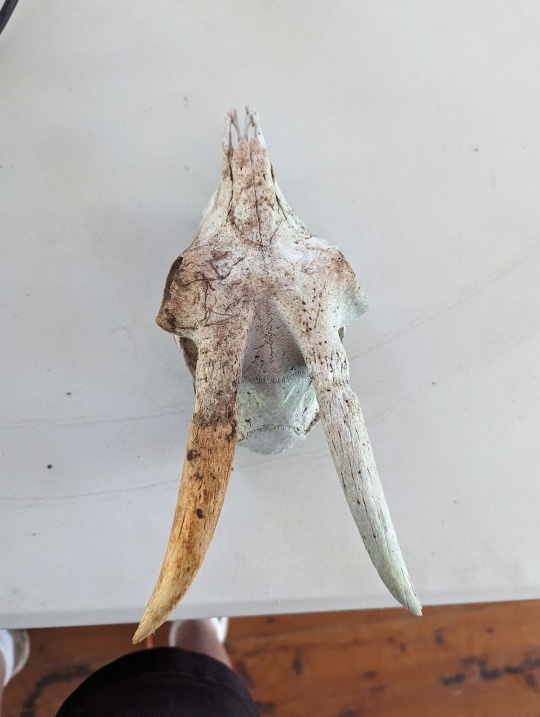

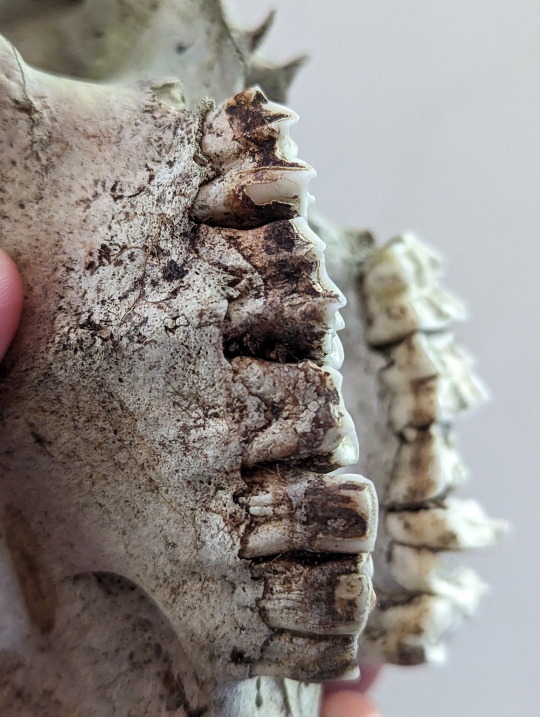
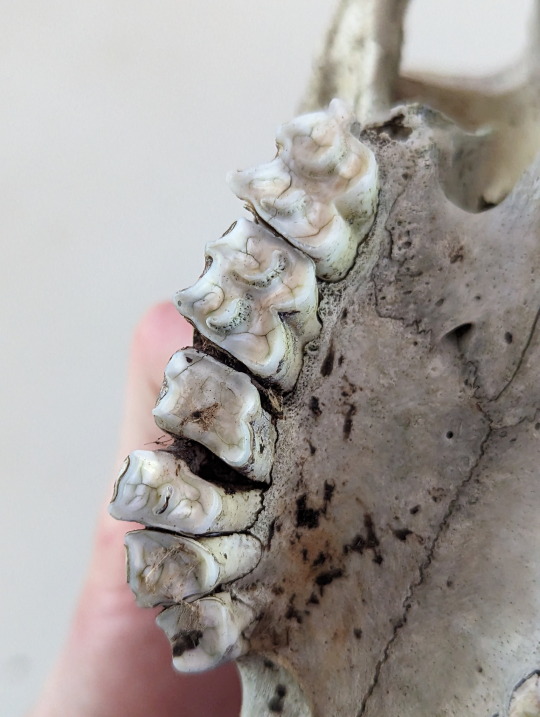
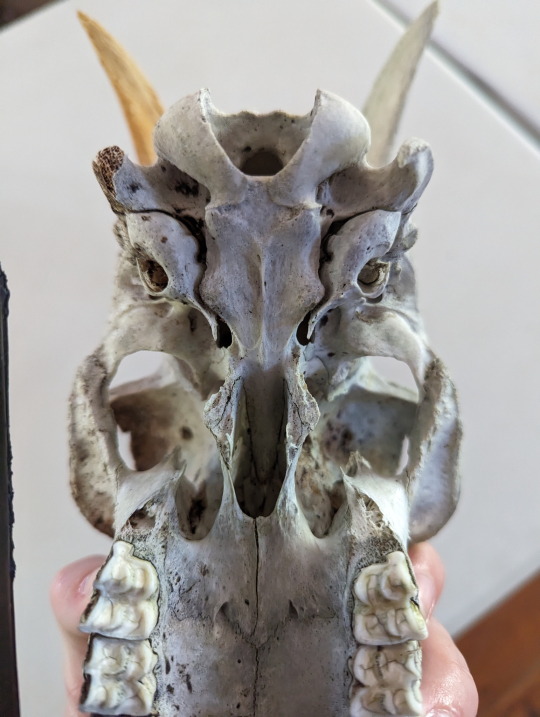
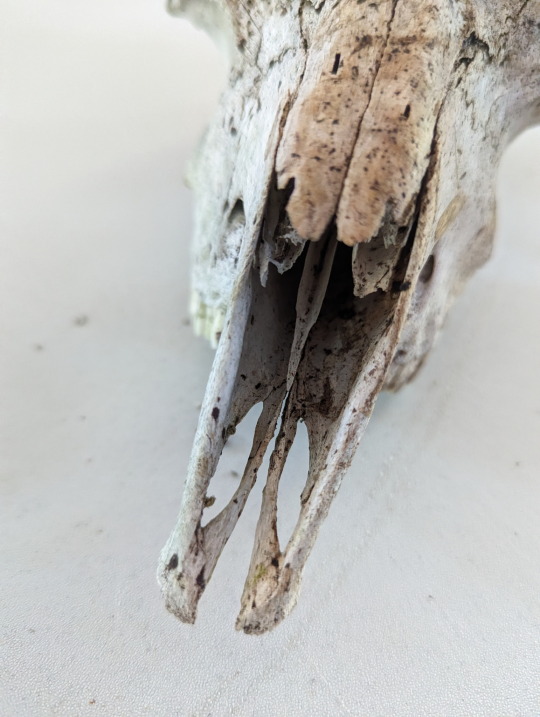
Skull belonging to one of the invasive goats on Woppa.
Look at those teeth...
13/09/23 - Capra hircus
QLD:CQC, Woppa (Great Keppel Island)
#dead tw#Capra hircus#Domestic Goat#goats#skull#Bovidae#Bovids#Ruminants#Mammalia#Mammals#Vertebrata#Vertebrates#Chordata#Chordates#goat skull
8 notes
·
View notes
Photo

her name is apple :D
#art#artwork#painting#digital arwork#cows#bovids#jersey cow#warm tones#fall#cottagecore#october#my art
92 notes
·
View notes
Text
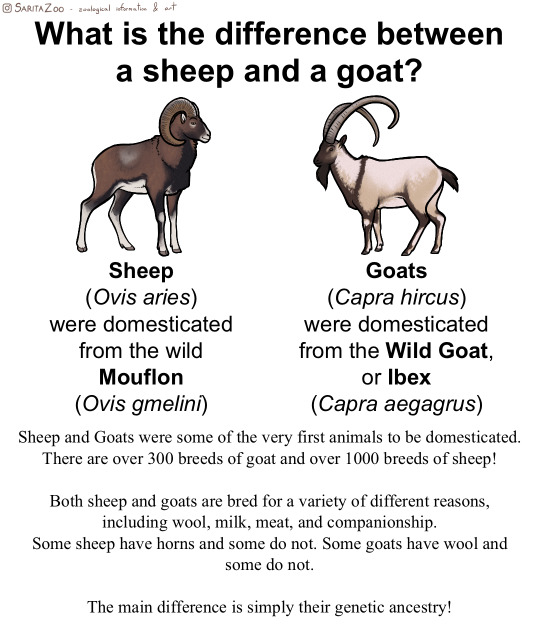
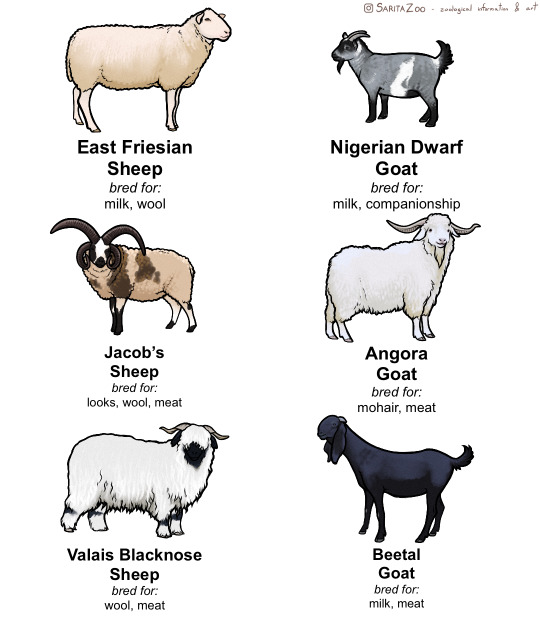
This is a bit of a lead-up to my next big project (for my educational instagram account) on domestic animals, but I felt it would be a good standalone post. After doing a bit of petting zoo work I’ve realized many people have misconceptions over what makes a goat a goat and what makes a sheep a sheep.
Hint: it’s not the horns or the wool or the beard!
422 notes
·
View notes
Text
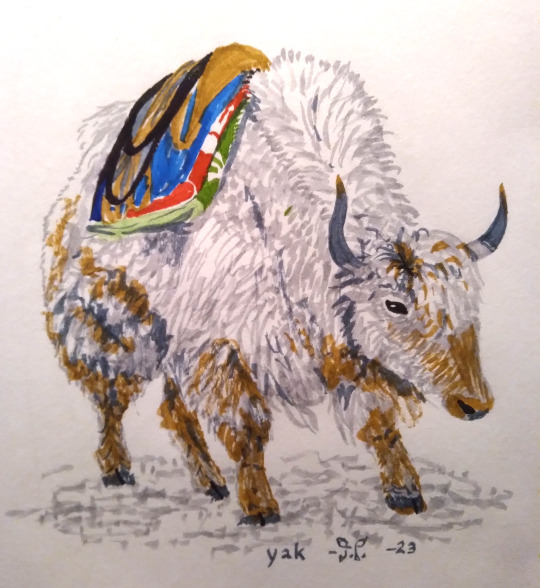
Yakitty yak! :)
Reference Image:
#yak#mammal#animals#brushmarkers#tibet#wintry#fur#furry#bovids#winter coat#nature#art#artwork#markers#himalayas
2 notes
·
View notes
Text

Himalayan goral (Naemorhedus goral)
Tangjianhe National Nature Reserve, Sichuan Province, China
Photo © Dong Lei / naturepl.com
4 notes
·
View notes
Text

La chèvre de Monsieur Seguin. Illustrated by Laure Delvolvé. 1946.
via
3K notes
·
View notes
Photo
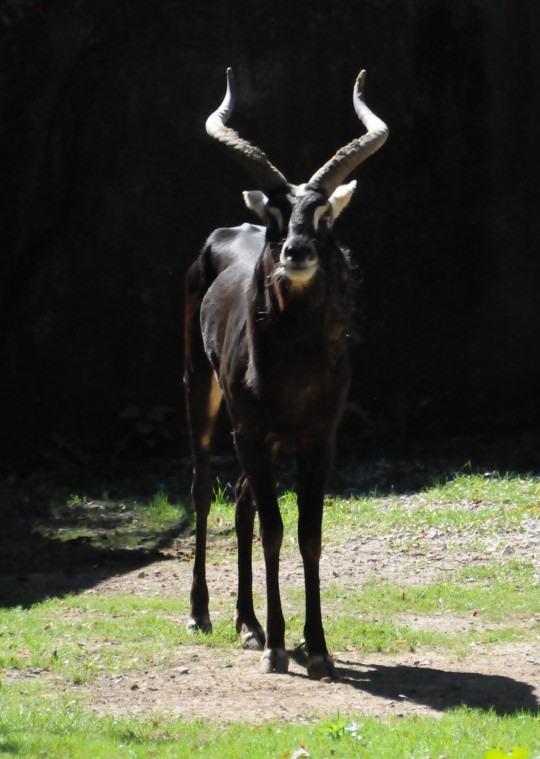

Newly arrived Nile Lechwe! Beautiful animal.
18 notes
·
View notes